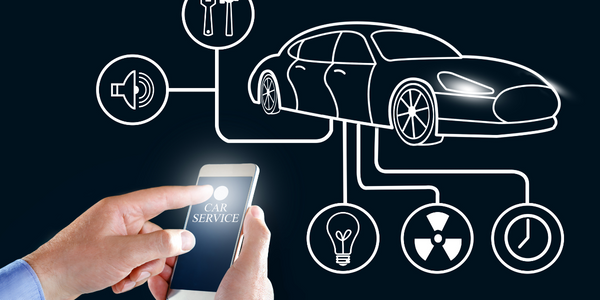公司规模
Large Corporate
地区
- Europe
国家
- Italy
产品
- Forcepoint Web Security
- Forcepoint Email Security Cloud
- Forcepoint Data Loss Prevention
技术栈
- Forcepoint Advanced Classification Engine
实施规模
- Enterprise-wide Deployment
影响指标
- Customer Satisfaction
技术
- 网络安全和隐私 - 云安全
- 网络安全和隐私 - 数据库安全
- 网络安全和隐私 - 网络安全
适用功能
- 商业运营
用例
- 网络安全
服务
- 系统集成
- 测试与认证
关于客户
客户是一家位于意大利的跨国托管服务集团。该公司在 22 个国家/地区提供客户支持、后台流程管理和信用管理。该公司充当其业务客户与其客户之间互动的代表,因此会交换大量个人身份信息。随着公司数据存储量的增加,其对数据窃贼的吸引力也在增加。入侵该公司意味着访问其服务的数百家公司的数据。该公司的整个业务都是围绕为客户的客户提供卓越体验而建立的。客户将客户互动和流程的管理外包给该公司,因为该公司在高接触客户互动方面拥有专业知识和创新能力。该公司提供托管客户服务,如发票、债务催收和信用管理、客户反馈管理和技术支持。
挑战
该公司是一家总部位于意大利的托管管理服务集团,为其客户的客户提供卓越的体验。由于其服务植根于数据交换,该公司的成功意味着它必须保护的信息量正在呈指数级增长。一旦发生违规,不法分子将不仅能访问一家公司的数据,还能访问数百家公司的数据。在与 Forcepoint 建立合作关系之前,该公司的开源安全解决方案难以管理和维护,而且耗时。在企业成为勒索软件攻击的受害者后,它知道是时候实施新的安全策略了,以更好地保护其数据免受网络威胁,同时为先进技术、更高程度的自动化和持续发展打开大门。
解决方案
该公司开始通过 Forcepoint Web Security 转变其安全策略,为总部的 500 名用户部署了该安全策略。Forcepoint 安全解决方案的一项功能 Forcepoint 高级分类引擎通过识别和分类跨网络的信息并提供实时安全评级来实现这一目标。这有助于 Forcepoint 防范新兴威胁 - 包括最先进的零日攻击和高级持续性威胁。随着电子邮件成为与客户交换信息和向客户提供服务的更常用的渠道,该公司开始注意到网络钓鱼攻击相应增加。为了更好地保护用户,它转向 Forcepoint 的电子邮件安全云解决方案,该解决方案不仅可以提供针对垃圾邮件和网络钓鱼的强大保护,还将这种保护扩展到漫游用户。最近,这两种安全解决方案都通过 Forcepoint DLP Discover 进行了丰富,以便更好地了解敏感数据所在的位置 - 随着 GDPR 和其他数据保护法的出现,这一点尤为重要。
运营影响
数量效益

Case Study missing?
Start adding your own!
Register with your work email and create a new case study profile for your business.
相关案例.

Case Study
Enel Secures Italian Power Generation Network
Electric energy operators around the world are working to increase the reliability and cyber resiliency of their systems. This includes Enel, a global power company that manages and monitors the Italian power grid. This grid:• Serves 31 million customers• Has a net installed energy capacity exceeding 31 gigawatts• Includes more than 500 power generation plants,including hydroelectric, thermoelectric, and wind• Is managed and monitored by Enel 24/7/365• Is operated by Terna, the Italian Transmission System Operator (TSO)Enel is responsible for the availability of the grid’s underlying ICS and industrial network. It also manages Regional Control Centers and Interconnection Centers which connect with the TSO. The TSO manages the flow of energy to the grid plus controls and remotely regulates the power generation of power plants, increasing and decreasing power production as required. The complex system of interaction and cooperation between Enel and the TSO has strong security implications as well as operational and business challenges.

Case Study
Securing the Connected Car Ecosystem
In-vehicle communications and entertainment system hosts high-value or sensitive applications. API libraries facilitate communication and sharing of vehicle data. These API libraries are vulnerable to reverse engineering and tampering attacks and may even result in loss of passenger safety. Attackers can inject malware that may be able to migrate to other in-car networks such as the controller-area-network (CAN) bus which links to the vehicle’s critical systems. Software provided for dealers to interface with cars through the OBD2 port is vulnerable to reverse engineering and tampering attacks. Hackers may be able to abuse these tools to inject malicious code into the ECUs and CAN bus. Attackers can lift the cryptographic keys used, and use that to build their own rogue apps/software. Their cloned version of the original app/software may have altered functionality, and may intend to gain access to other in-car networks.

Case Study
Secure and Cloud-based Data Marketplace
The great promise of new connected concepts of industry like 'Industry 4.0' is their ability to deliver a historically unparalleled level of responsiveness and flexibility. While modern supply chains are already heavily integrated and designed to be fluid and fast moving, a large swathe of manufacturing still remains beholden to economies of scale, large production runs, and careful preplanning.The Industrial Internet of Things (IIoT) is set to change this by allowing small-batch or even custom manufacturing on a truly industrial scale. With machines whose functions are not set in stone, but flexible and determined by their operating software and with a new form of connectivity bringing industrial engineers, product manufacturers, and end users closer together than ever before. Ad-hoc adjustments to automotive parts, for example, during active product runs or the bespoke manufacturing of custom sneakers become very viable options indeed.Much of this remains a theoretical vision, but IUNO, the German national reference project for IT security in Industry 4.0 demonstrates the new capabilities in action with a secure technology data marketplace running a smart drinks mixer.

Case Study
Expedia Hosted by 2lemetry Through AWS
Expedia is committed to continuous innovation, technology, and platform improvements to create a great experience for its customers. The Expedia Worldwide Engineering (EWE) organization supports all websites under the Expedia brand. Expedia began using Amazon Web Services (AWS) in 2010 to launch Expedia Suggest Service (ESS), a typeahead suggestion service that helps customers enter travel, search, and location information correctly. According to the company’s metrics, an error page is the main reason for site abandonment. Expedia wanted global users to find what they were looking for quickly and without errors. At the time, Expedia operated all its services from data centers in Chandler, AZ. The engineering team realized that they had to run ESS in locations physically close to customers to enable a quick and responsive service with minimal network latency.
.png)
Case Study
OTA Software Updates for Smart Energy (gridX)
gridX has a requirement for over-the-air software updates for their gridBox devices and used the Yocto Project for their builds. The driver for the requirement was having the ability to quickly support new features, as well as deploying bug fixed and path known security vulnerabilities. New software updates with a US stick manually to all gridBox devices in the field would be prohibitively expensive and labor-intensive.

Case Study
Transformed IT Infrastructure Improves Business Agility
A global security, storage, and systems management software provider planned to demerge into two separate companies. To prepare, it undertook a major overhaul of its IT infrastructure and operations strategy. A key requirement: streamlining the Hosting Group, which handled compute, storage, and middleware operations. These functions had grown complex and had a wide geographic distribution. The company planned to bring them under closer in-house management.The company looked to increase its business agility so it could quickly and creatively respond to customer demands with improved internal collaboration and optimized go-to- market and IT service delivery capabilities. Modernizing IT functions, and making them more responsive, was critical to achieving these goals.







